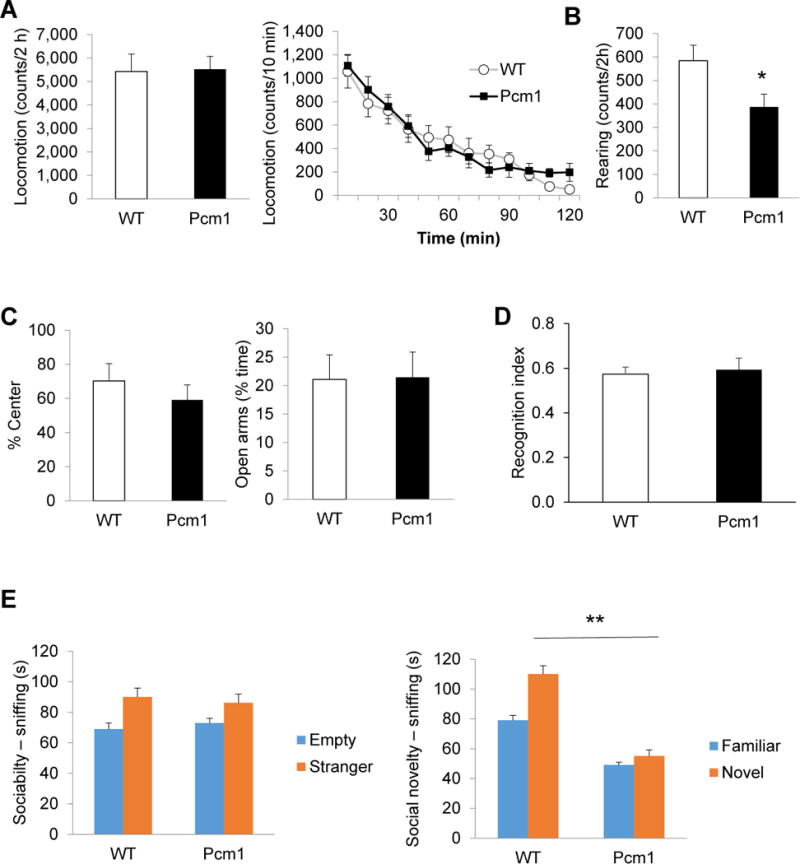Fig. 2.

Pcm1+/− mice were impaired in recognition of a novel social stimulus, but not a novel object. (A) No difference in locomotion in the open field (left). Pcm1+/− mice stopped habituating at 80 min, ttest comparing 80 min vs. 120 min: p<0.01 for WT, p=0.85 for Pcm1+/− mice (right). (B) Pcm1+/− mice reared less in the open field, *p<0.05. (C) No change in measurements of anxiety based on % center activity in the open field (left) and % time in the open arms of the elevated plus (right). (D) In the novel object recognition test, Pcm1+/− mice showed normal preference for the novel object after a 1 h inter-trial interval. Presented as interaction with novel object/total interaction time. (E) The three-chamber social interaction test. In the sociability phase only WT mice interacted more with the mouse than with an empty enclosure (p<0.05), but ANOVA did not detect a significant effect of Pcm1+/− on sociability (left). In the social novelty phase the Pcm1+/− mice were impaired, F(1,25)=12.38, **p<0.01 (right). WT mice interacted both with the familiar and with the novel mouse significantly longer than the Pcm1+/− mice interacted with each (Bonferroni post-test analysis, p<0.001).
